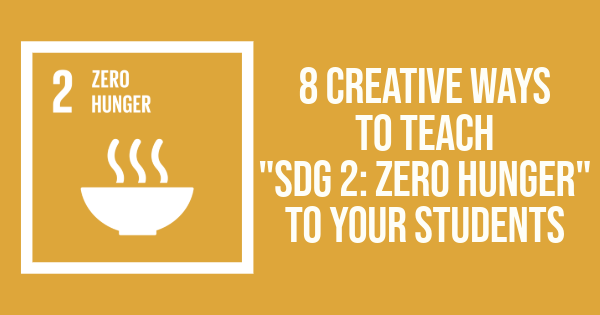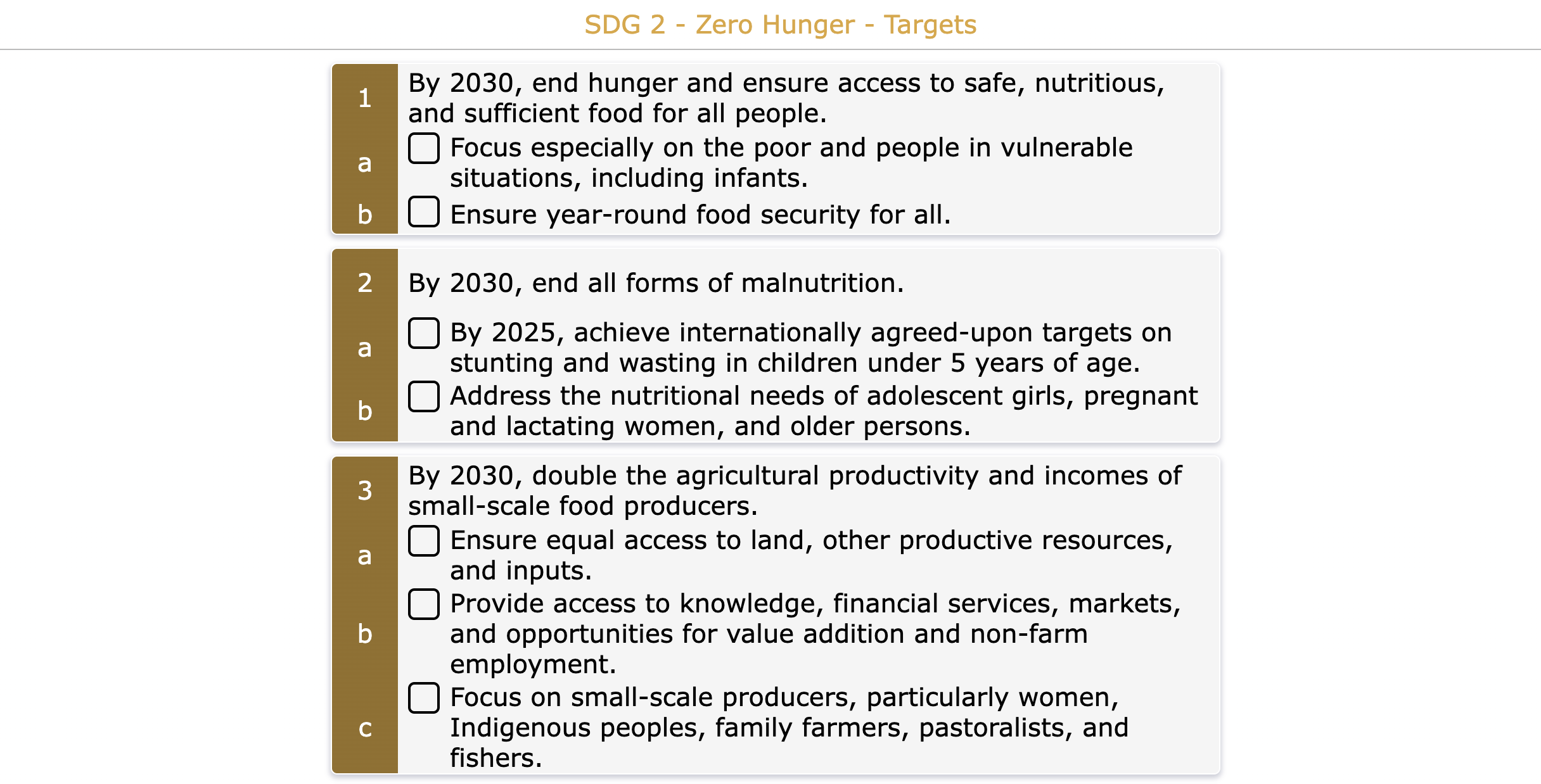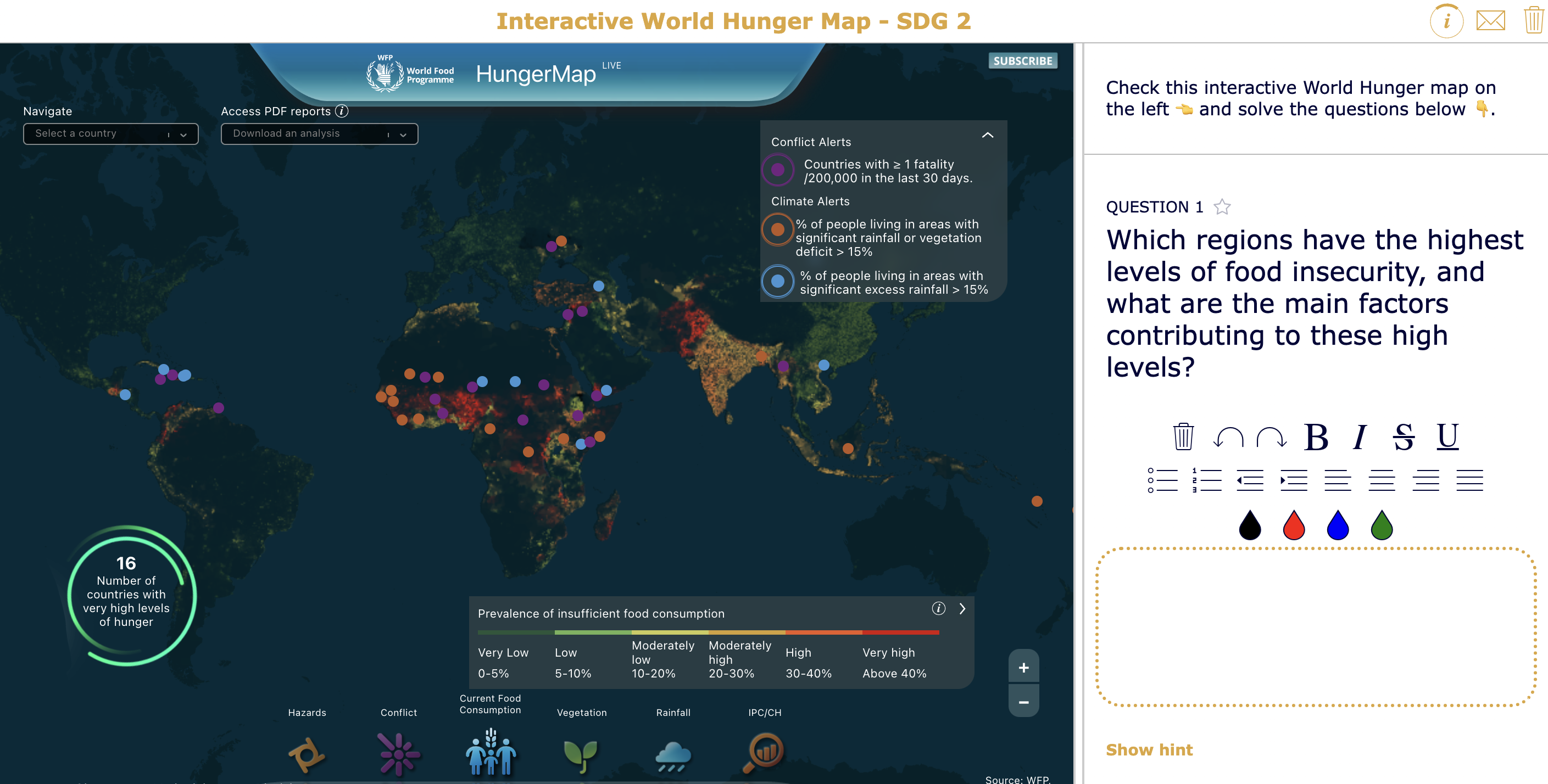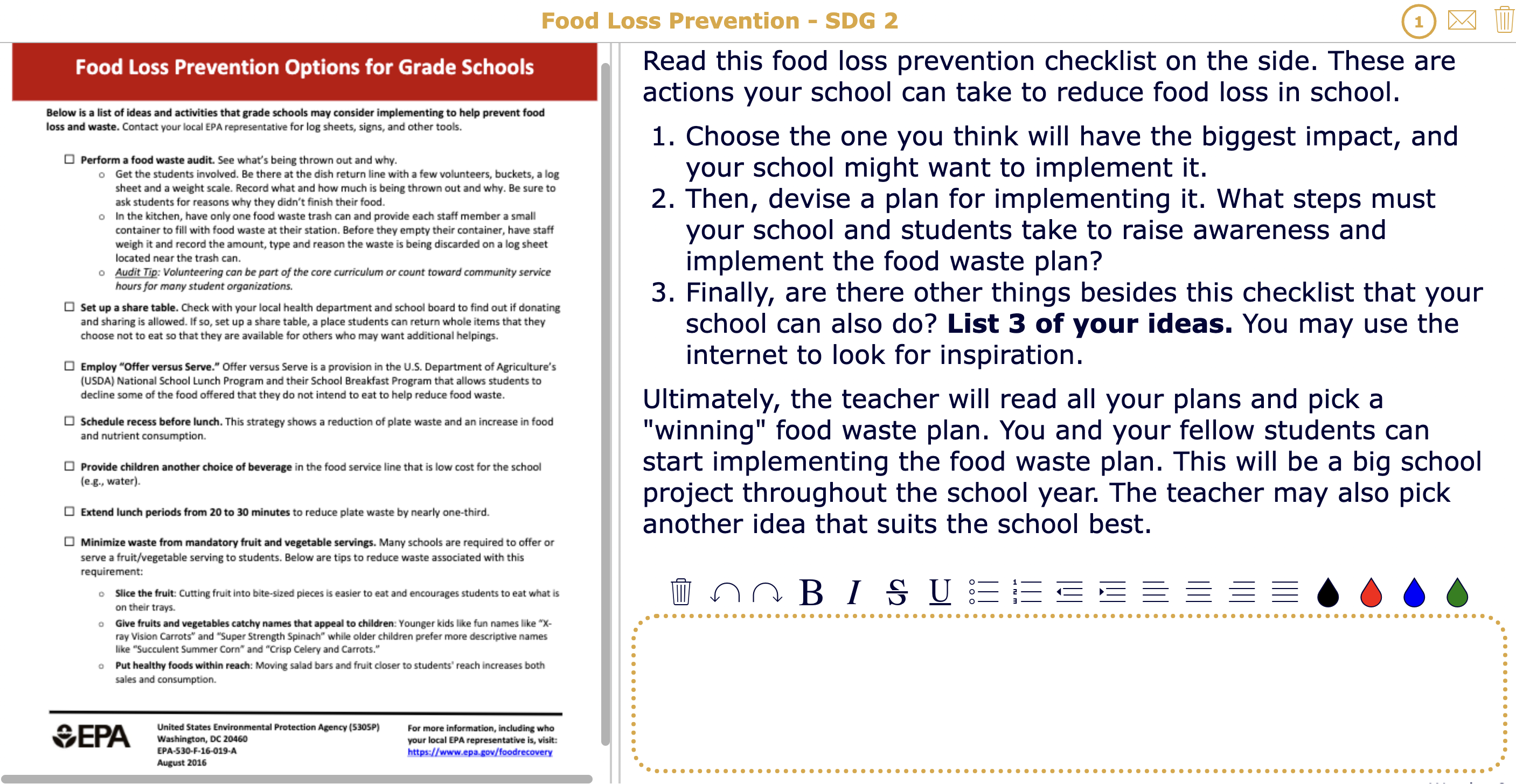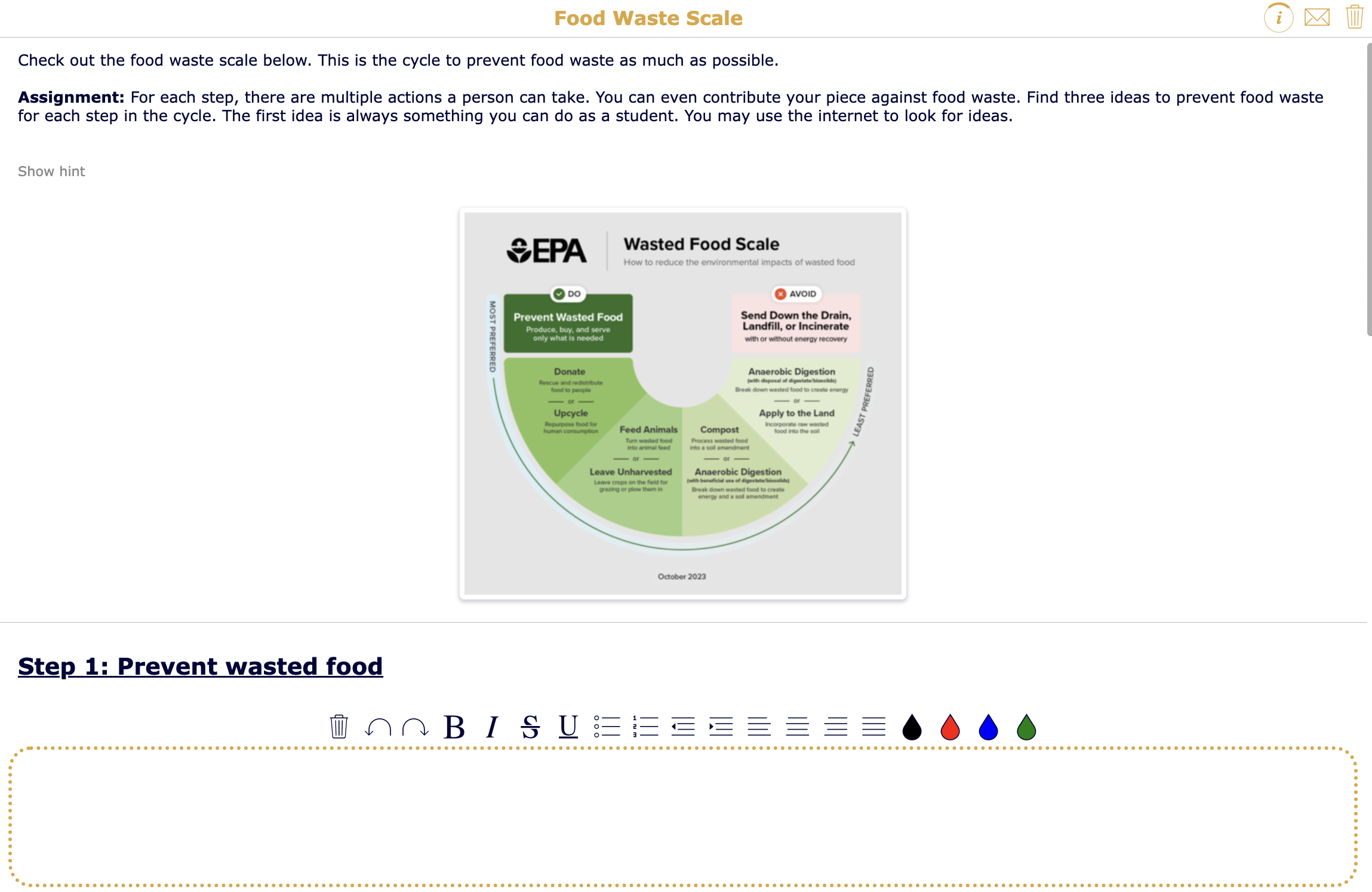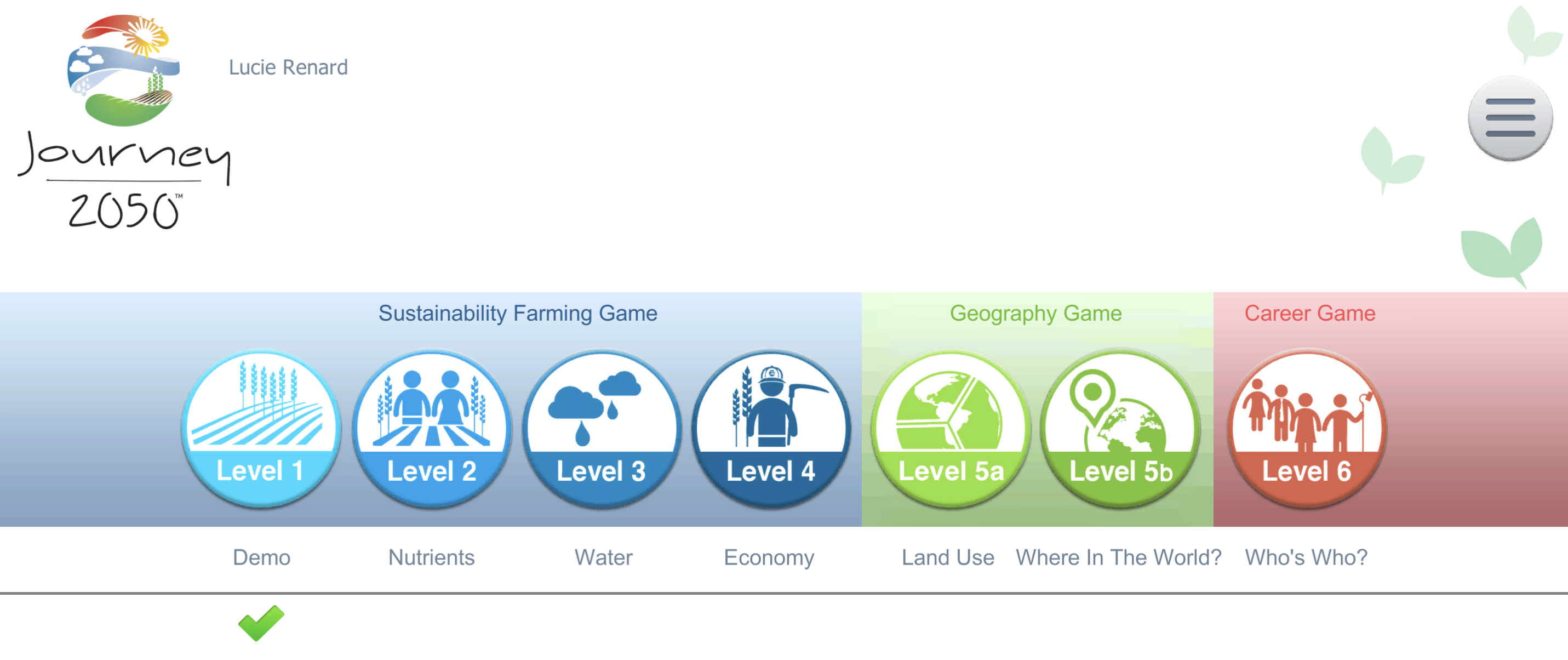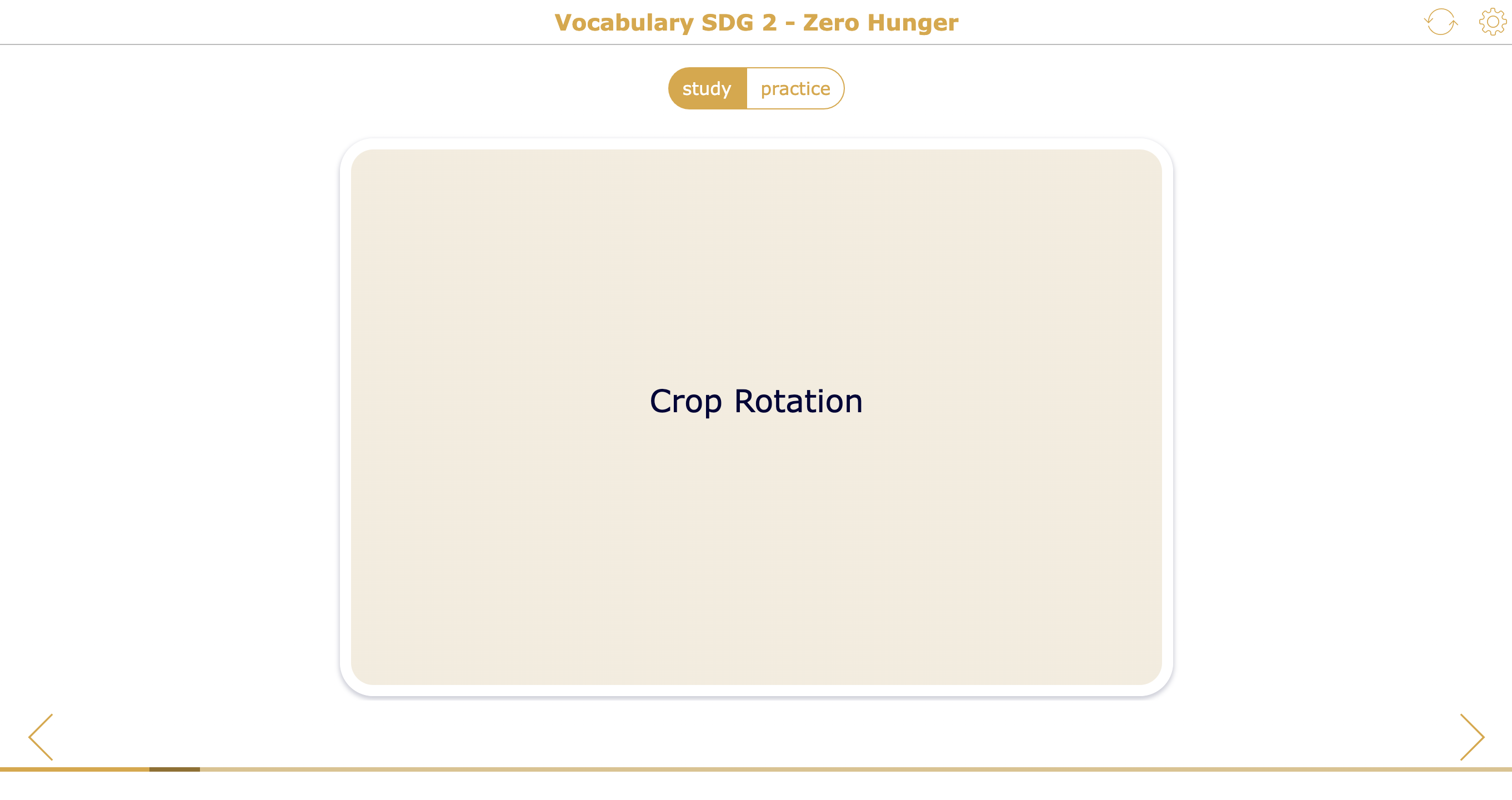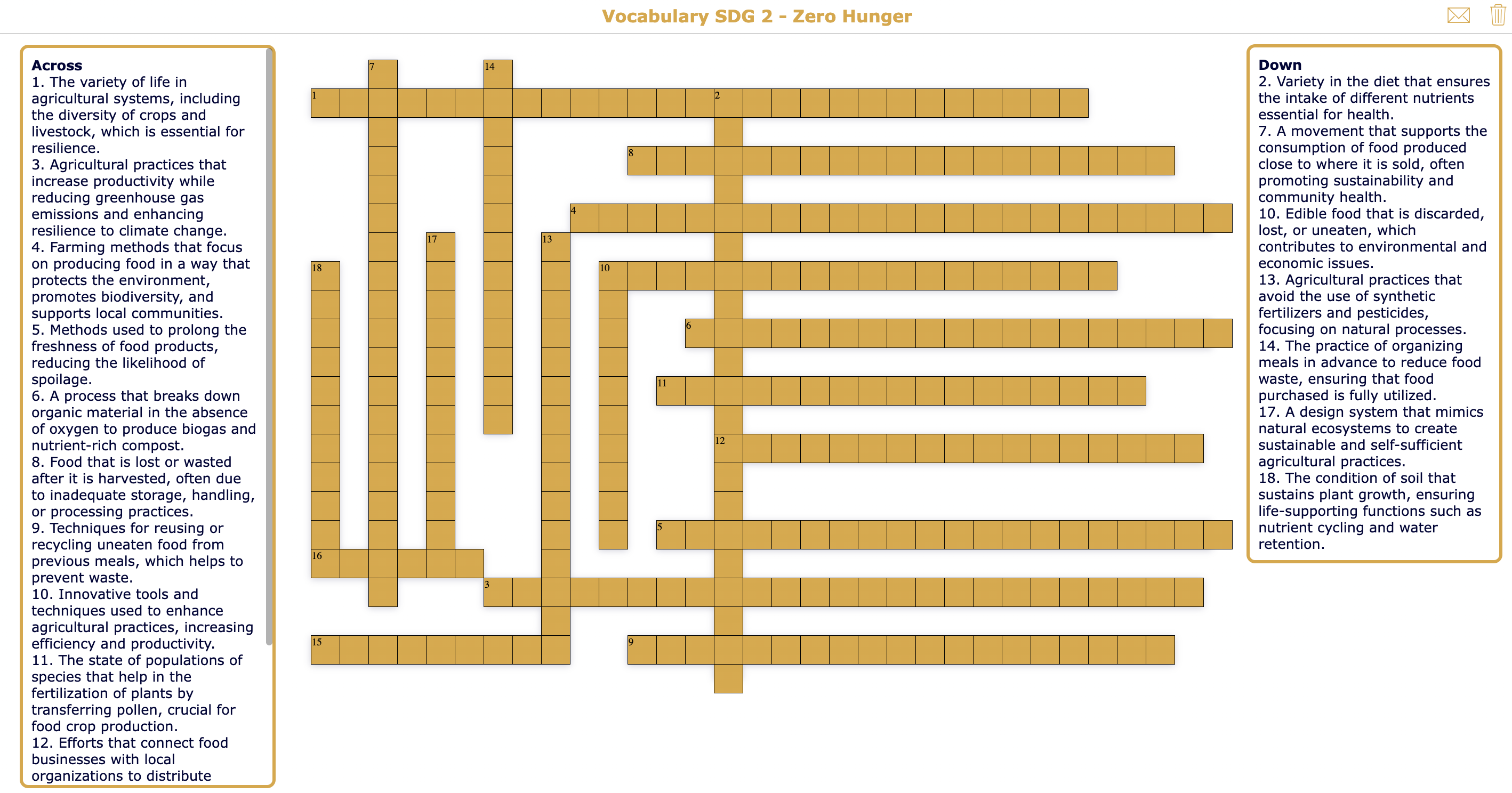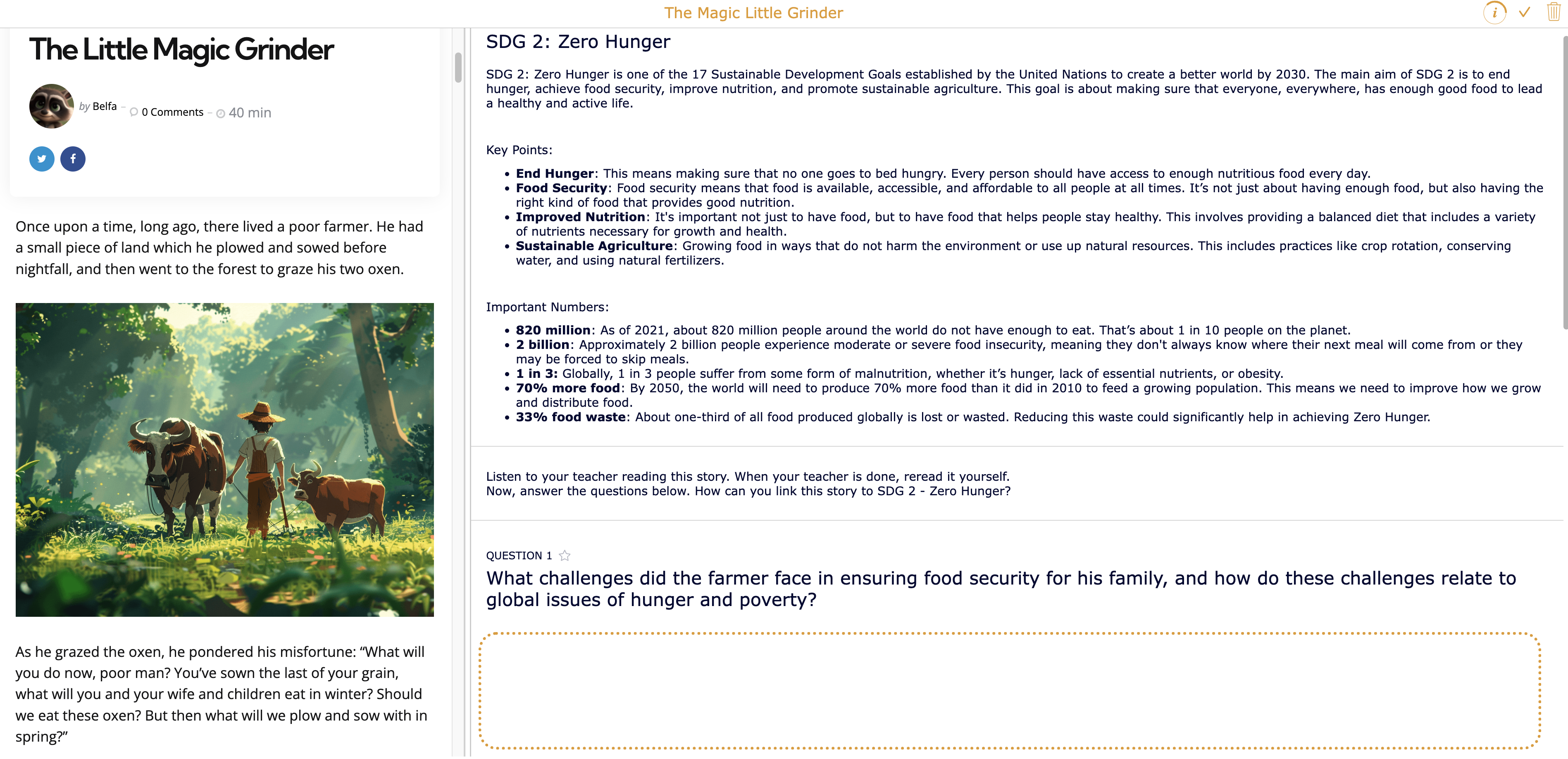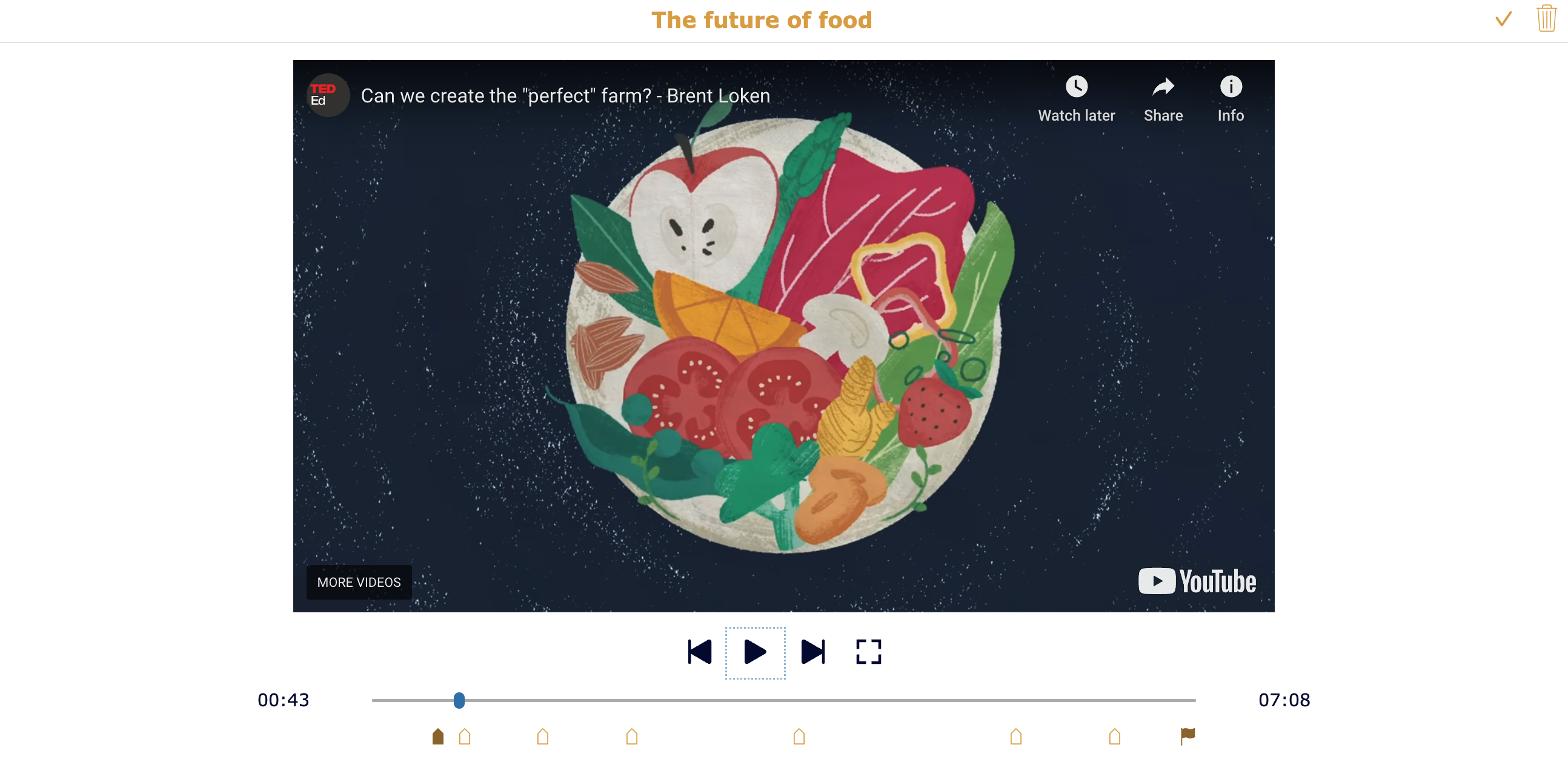8 Creative Ways to Teach "SDG 2: Zero Hunger" to Your Students
 Lucie Renard —
Lucie Renard —
In today’s interconnected world, teaching students about global challenges is more critical than ever. Sustainable Development Goal (SDG) 2 – Zero Hunger – is a vital part of this education, aiming to end hunger, achieve food security, and promote sustainable agriculture. As teachers, you have the unique opportunity to inspire your students to think critically about global issues like hunger and to equip them with the knowledge and skills to make a difference.
This blog post will provide you with valuable insights into SDG 2 and offer 10 engaging lesson ideas to help you bring this important topic into your classroom. P.S. Make sure to check out part 1 of this blog post series on SDGs, here: 8 Engaging Lesson Plans to Teach “SDG 1: No Poverty” to Your Students
💡 The digital activities are created with BookWidgets, a content creation and evaluation tool for teachers. You can make a copy of the lessons below to your free BookWidgets account, or you can navigate to this BookWidgets group folder where you can find them all together. This allows you to duplicate the activities, make changes (language, instructions, settings) when needed, and share it with your students. This way, you will also receive the results and be able to provide student feedback.
Now, let’s get started!
What is SDG 2: Zero Hunger?
SDG 2 – Zero Hunger is one of the 17 Sustainable Development Goals established by the United Nations in 2015. The goal aims to eliminate hunger and malnutrition by 2030, ensuring that all people, especially the most vulnerable, have access to sufficient and nutritious food year-round. This SDG also emphasizes the need for sustainable food production systems, resilient agricultural practices, and equitable access to land, technology, and markets.
8 Free and Interactive Lesson Plans to Teach “SDG 2 - Zero Hunger”
Before I show you the first activity, it’s essential to understand why teaching “SDG 2 - Zero Hunger” to your students is important. Teaching SDG 2 – Zero Hunger is crucial as it raises students’ awareness of global hunger and fosters empathy for those affected. It promotes critical thinking by encouraging students to explore the causes of food insecurity and consider sustainable solutions. This education inspires active citizenship, motivating students to take action locally and globally. SDG 2 connects students to both local and global food systems, highlighting the importance of sustainable practices. By integrating this goal into various subjects, educators prepare students for future challenges and align with broader educational aims of sustainability and social justice. Ultimately, teaching SDG 2 instills lifelong values of fairness, responsibility, and global citizenship.
⚠️ Important! Although these lessons are intended to create empathy amongst students for every student’s situation, some lessons might be hard to face for students who are really in this situation. Always analyze your classroom and students and make the right call regarding your students and their situations.
1. Mapping Global Hunger
Have students explore an interactive world map that shows hunger levels across different regions. They can analyze data, identify patterns, and discuss the reasons behind these trends. I created an interactive Split Worksheet activity in which your students can investigate hunger levels throughout countries globally by using the interactive map and analyze the data by answer the questions on the other side. This is an SDG 2 assignment for high school students. Even college students might complete this activity and learn from it.
2. The Food Waste Prevention Plan
The Environmental Protection Agency (EPA) provides resources and guidelines to help schools and communities reduce food waste, including tracking tools and educational materials. I used one of their checklists for schools to prevent food loss. In the assignment below, your 5th and 6th grade students read the checklist and come up with a food waste prevention plan for their school.
3. Food Waste Scale
This Video Quiz activity shows an interesting TedEd video explaining why it’s hard for individuals to escape poverty. The video pauses at some point to ask your students questions about what they just learned and check their understanding. This is the perfect activity to introduce “SDG 1 - No poverty” to high school students.
4. Journey 2050 Game
Journey 2050 is an educational game that simulates sustainable farming practices, directly aligning with SDG 2 by teaching students about sustainable agriculture and its role in achieving food security.
Through interactive gameplay, students make decisions about land use, crop rotation, water management, and other agricultural practices, seeing the immediate and long-term impacts on food production, economic stability, and environmental health. The game emphasizes the importance of balancing productivity with sustainability, helping students understand how resilient agricultural practices can contribute to ending hunger.
By exploring different farming techniques and technologies, students learn how sustainable food systems can feed a growing population while preserving resources for future generations. Journey 2050 not only educates students on the challenges of global food security but also empowers them to think critically about innovative solutions to hunger and sustainability issues. This game is perfect for primary school students and middle school students.
5. Vocabulary Flashcards SDG2 - Zero Hunger
Digital flashcards are an effective tool for teaching new vocabulary about SDG 2 because they help students quickly and efficiently memorize key terms, enhancing their understanding of complex concepts related to hunger and sustainable development. The interactive nature of digital flashcards also engages students, making learning more enjoyable and accessible. Additionally, these flashcards can be easily updated and shared, ensuring that students have access to the most relevant and up-to-date information. You can even print them if you like to provide the flashcards in paper rather then digital.
6. Crossword Vocabulary SDG 2 - Zero Hunger
Using that newly learned vocabulary related to SDG 2 in a digital crossword puzzle reinforces learning by challenging students to recall and apply terms in a fun, interactive way. This method promotes deeper engagement and retention, as students actively connect words with their meanings. Digital crosswords also provide instant feedback, allowing students to identify and correct misunderstandings, solidifying their grasp of key concepts.
7. The Little Magic Grinder
The story about the magic little grinder that produces unlimited food from Naratopia.com can be connected to Sustainable Development Goal (SDG) 2: Zero Hunger by using it as a metaphor or teaching tool to highlight the importance of ensuring food security, sustainable food production, and equitable access to resources.
Here are some key connections to make:
- Unlimited Food Production: In the story, the grinder can produce endless amounts of food, symbolizing the potential of modern technology and agricultural innovation to increase food production. This relates to SDG 2’s target of ending hunger by ensuring that everyone has access to sufficient, safe, and nutritious food all year round. The grinder’s magical ability can represent advanced agricultural practices, sustainable farming, or innovative technologies that can significantly boost food production and contribute to global food security.
- Equitable Distribution: The story can also highlight the importance of equitable distribution of food. Even if the grinder can produce unlimited food, its benefits would only be realized if the food is shared fairly among those in need. This mirrors the challenge in real life where, despite enough food being produced globally, many people still go hungry due to unequal distribution, poverty, and lack of access. The narrative could be adapted to show that when the grinder was used wisely and the food distributed fairly, everyone was fed, but when misused or hoarded, it led to waste or scarcity, emphasizing the need for fair distribution in achieving Zero Hunger.
- Sustainable Use of Resources: The grinder’s ability to produce unlimited food could be connected to the need for sustainable agricultural practices that do not deplete natural resources. Just like the grinder must be used wisely to avoid problems, real-world food production must be sustainable to ensure that future generations can also meet their food needs without damaging the environment. If the story includes a moral about overuse or careless use leading to negative consequences (e.g., the grinder being lost or broken), it can symbolize the dangers of unsustainable practices that jeopardize long-term food security.
- Innovation and Local Solutions: The magic grinder could symbolize the potential of local innovations and solutions to solve hunger. The story can be used to encourage thinking about how communities can develop their own “magic grinders” — innovative, context-specific solutions that address local food security challenges. This encourages the idea that SDG 2 is not just about global initiatives but also about empowering communities to be self-sufficient and innovative in addressing hunger.
By analyzing the themes in “The Little Magic Grinder,” students can gain a deeper understanding of the importance of sustainability, responsible resource management, and ethical considerations in the pursuit of ending hunger and achieving food security.
8. The Future Of Food - Video lesson
This interesting TedEd video explains to students the big question and challenge we face according to food supply and sustainable farming. It’s a good lesson for introducting SDG 2 to your students so they understand the problems we have today and the solutions we need to fix them. The video stops on certain time point so students can refelect on the questions they get and sow understanding. This SDG 2 lesson is perfect for 5th & 6th grade primary school students and middel school students.
More ready-to-use SDG lesson plans and resources
This is just part two of a blog post series about teaching the SDG’s. I will post a new blog post about the next SDG in line, every month. Check out my previous post with free lesson ideas on SDG 1: No Poverty.
And if you can’t wait this long on all the other posts, I already created 1 lesson for each SDG in this digital group work planner activity. Here’s the blog post about teaching the SDGs and you can find all the seperate SDG activities in this BookWidgets group folder in case you want to make some changes.
Wrap up
Teaching about SDG 2 – Zero Hunger is not only an opportunity to engage students with a critical global issue, but it also empowers them to become active participants in creating a better world. By incorporating these lesson plans and resources into your teaching, you can help your students develop a deeper understanding of the challenges and solutions surrounding hunger and inspire them to take meaningful action in their own lives.
Whether you’re just beginning to explore SDG education or looking for fresh ideas to enhance your current lessons, these strategies and resources will equip you to effectively teach SDG 2 and make a lasting impact on your students.
Remember, All the featured SDG lesson plans are designed with BookWidgets. You can duplicate the SDG lesson plans from this group, adapt them, and share them with your students. You can also create lessons on this topic or any other topic from scratch. Want to learn more about creating engaging lesson activities with BookWidgets?
✔️ Follow BookWidgets on X / Twitter, LinkedIn, Instagram, and join our teacher community on Facebook! ✔️ And, be sure to connect with me, Lucie, on LinkedIn! 👋
